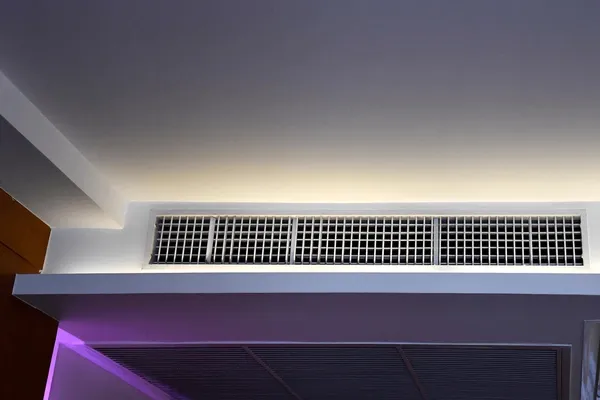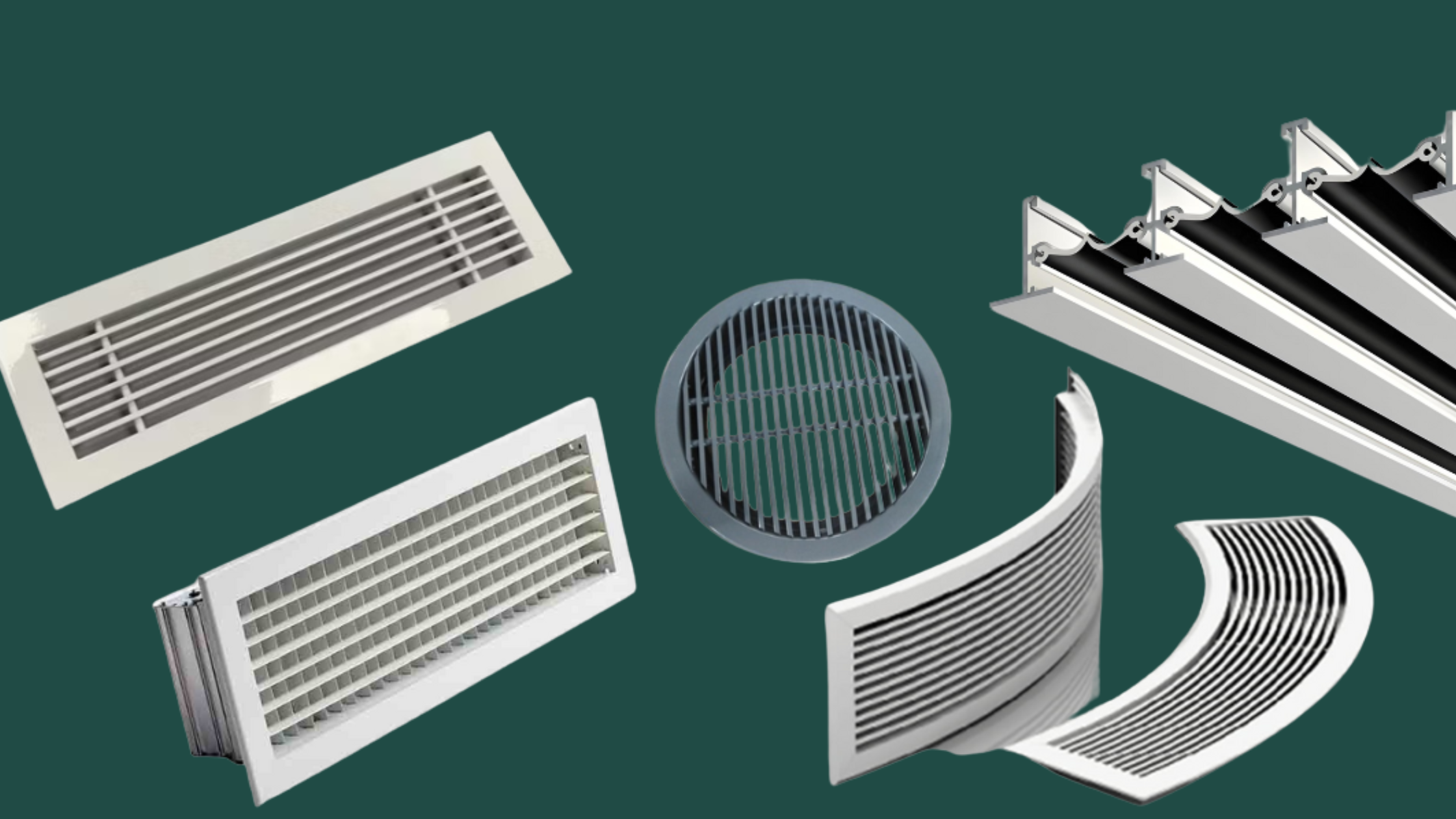A Complete Guide to Different AC Grill Types and Their Benefits

Overview
AC grills are essential components of HVAC systems, playing a critical role in air distribution, indoor comfort, and energy efficiency. These grills not only facilitate the effective delivery and return of air but also contribute to the aesthetic appeal of interior spaces. Understanding the different types of AC grills helps homeowners and businesses make informed choices tailored to their ventilation needs and design preferences.
Types of AC Grills

Supply Grills
Supply grills deliver conditioned air from the HVAC system into living or working spaces. Commonly used in both commercial and residential settings, these grills often feature adjustable louvers, allowing users to control airflow direction for optimal distribution.
Return Grills
Return grills facilitate the return of air back to the HVAC system for reconditioning. Their durable construction ensures longevity, and they are vital for maintaining indoor air quality by continuously circulating air.
Diffuser Grills
Diffuser grills not only cover duct openings but also control airflow direction and distribution. These are particularly beneficial in commercial spaces, modern offices, and luxury homes, as they ensure even cooling.
Louver Grills
Louver grills are the most common type, featuring fixed angled blades that allow unrestricted airflow. Typically made from aluminum or galvanized iron, they are often used as return air grills.
Linear Bar Grills
With a sleek, modern design, linear bar grills are suitable for contemporary spaces. They can be mounted on ceilings, walls, or floors and are compatible with return, supply, or exhaust systems, making them ideal for commercial applications.
Round Ceiling Grills
Round ceiling grills provide balanced airflow while enhancing interior aesthetics. They efficiently distribute conditioned air across a room, contributing to both comfort and style.
Square Swirl Grills
Equipped with spiral blades, square swirl grills create directional airflow patterns that enhance air circulation, making them ideal for environments requiring dynamic air distribution.
Egg Crate Grills
Lightweight and cost-effective, egg crate grills are commonly used in ceiling installations for exhaust and return air systems. Their open design ensures excellent airflow and seamless integration into modern architectural spaces.
Material Considerations for AC Grills
The material used in AC grills significantly impacts durability, maintenance, and performance.
Aluminum
- Lightweight and rust-resistant
- Features a natural oxide layer that prevents corrosion
- Often powder-coated for enhanced durability and aesthetic appeal
Steel
- Strong and impact-resistant
- Galvanized or coated for corrosion protection
- Ideal for high-traffic areas but requires moisture protection
Cast Iron
- Less common due to its weight
- Used in specific applications requiring heat retention
- Requires seasoning and maintenance to prevent rust
Material Selection Factors
- Environmental conditions: Aluminum is preferable for humid or coastal areas due to its corrosion resistance.
- Intended use: Steel is ideal for high-traffic commercial areas, while aluminum is better for residential applications.
- Aesthetic preferences: Material choice influences both design and maintenance requirements.
Installation and Maintenance
Proper Installation
- Incorrectly sized or poorly located grills can hinder airflow and increase energy costs.
- Professional installation ensures optimal air distribution and system efficiency.
- HVAC system design and duct layout must be considered for effective placement.
Regular Maintenance
- Dust and debris accumulation can obstruct airflow and reduce efficiency.
- Cleaning with a vacuum, soft brush, or mild soap solution helps maintain performance.
- Ensuring grills are completely dry before reinstallation prevents moisture-related issues.
Identifying Damage
- Routine inspections help detect cracks, rust, or other issues.
- Prompt repairs or replacements prevent inefficiencies and system strain.
Seasonal Checks
- Preemptive inspections before extreme weather conditions ensure optimal HVAC performance.
Energy Efficiency and Performance
Role of Return Grills
- Maintain consistent temperature control by recycling air for reconditioning.
- Prevent system overwork, reducing energy consumption and operational costs.
HVAC System Strain Reduction
- Properly placed return grills help the system operate efficiently.
- Complementary maintenance practices, such as filter changes and duct sealing, improve performance.
Energy Performance Metrics
- Energy Efficiency Ratio (EER): A rating above 8.5 indicates high efficiency.
- Coefficient of Performance (COP): Values between 3.3 and 4 reflect efficient heat transfer.
Common Misconceptions About AC Grills
Efficiency and Functionality
- Not all AC grills function the same way; supply and return grills serve different purposes.
- Misusing grill types can lead to inefficient airflow and increased energy costs.
Size Considerations
- Larger grills do not always provide better airflow.
- Proper sizing ensures optimal air distribution without energy waste.
Conclusion
Understanding different AC grill types, their materials, and proper installation enhances HVAC performance, energy efficiency, and indoor comfort. By balancing functionality with aesthetics, users can optimize their indoor environments while ensuring long-term HVAC efficiency.
